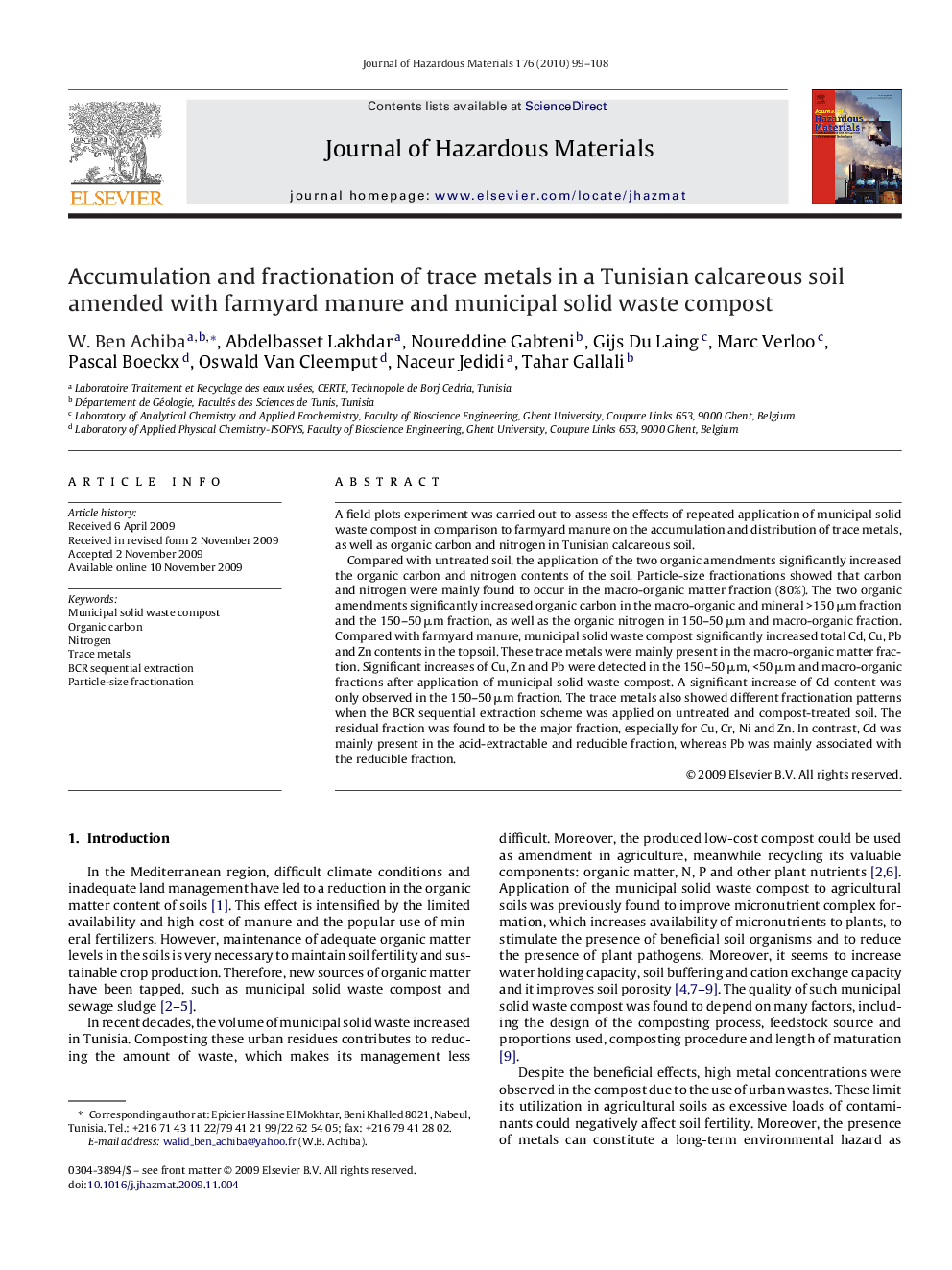| Article ID | Journal | Published Year | Pages | File Type |
|---|---|---|---|---|
| 580539 | Journal of Hazardous Materials | 2010 | 10 Pages |
Abstract
Compared with untreated soil, the application of the two organic amendments significantly increased the organic carbon and nitrogen contents of the soil. Particle-size fractionations showed that carbon and nitrogen were mainly found to occur in the macro-organic matter fraction (80%). The two organic amendments significantly increased organic carbon in the macro-organic and mineral >150 μm fraction and the 150-50 μm fraction, as well as the organic nitrogen in 150-50 μm and macro-organic fraction. Compared with farmyard manure, municipal solid waste compost significantly increased total Cd, Cu, Pb and Zn contents in the topsoil. These trace metals were mainly present in the macro-organic matter fraction. Significant increases of Cu, Zn and Pb were detected in the 150-50 μm, <50 μm and macro-organic fractions after application of municipal solid waste compost. A significant increase of Cd content was only observed in the 150-50 μm fraction. The trace metals also showed different fractionation patterns when the BCR sequential extraction scheme was applied on untreated and compost-treated soil. The residual fraction was found to be the major fraction, especially for Cu, Cr, Ni and Zn. In contrast, Cd was mainly present in the acid-extractable and reducible fraction, whereas Pb was mainly associated with the reducible fraction.
Keywords
Related Topics
Physical Sciences and Engineering
Chemical Engineering
Chemical Health and Safety
Authors
W. Ben Achiba, Abdelbasset Lakhdar, Noureddine Gabteni, Gijs Du Laing, Marc Verloo, Pascal Boeckx, Oswald Van Cleemput, Naceur Jedidi, Tahar Gallali,
